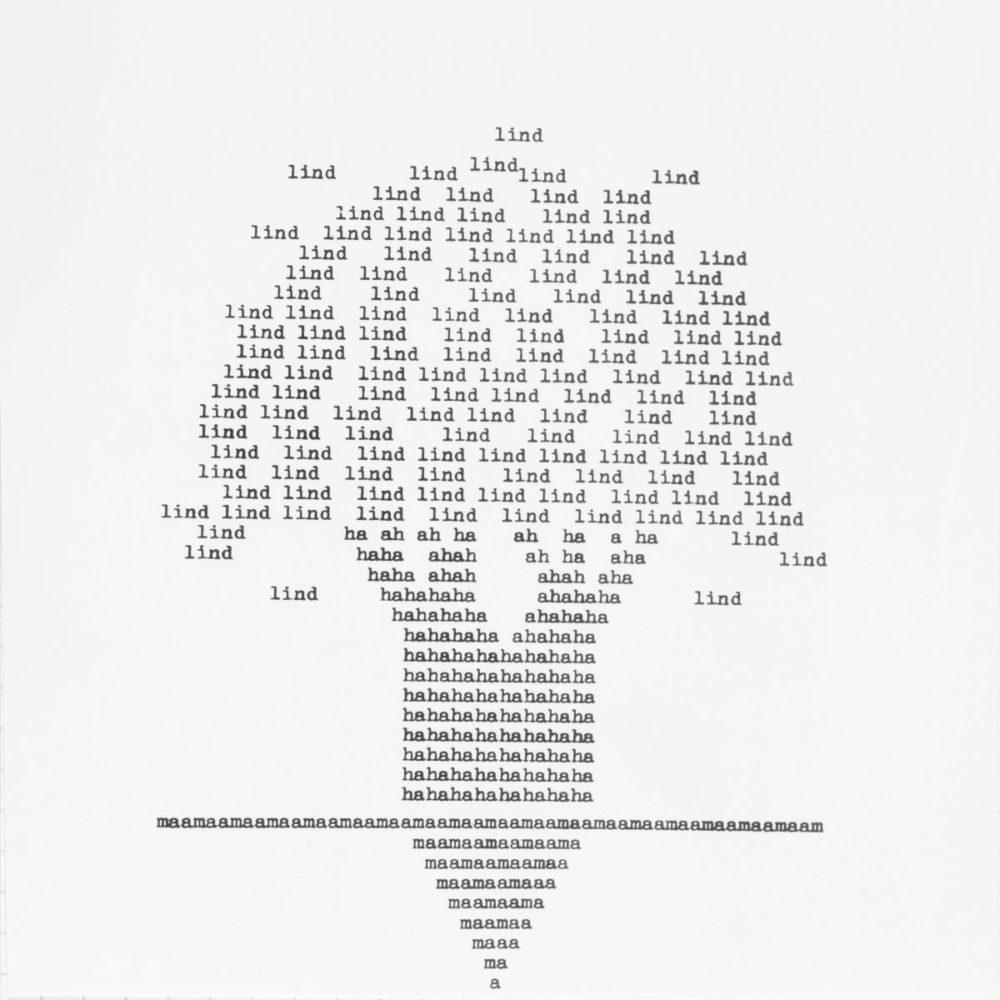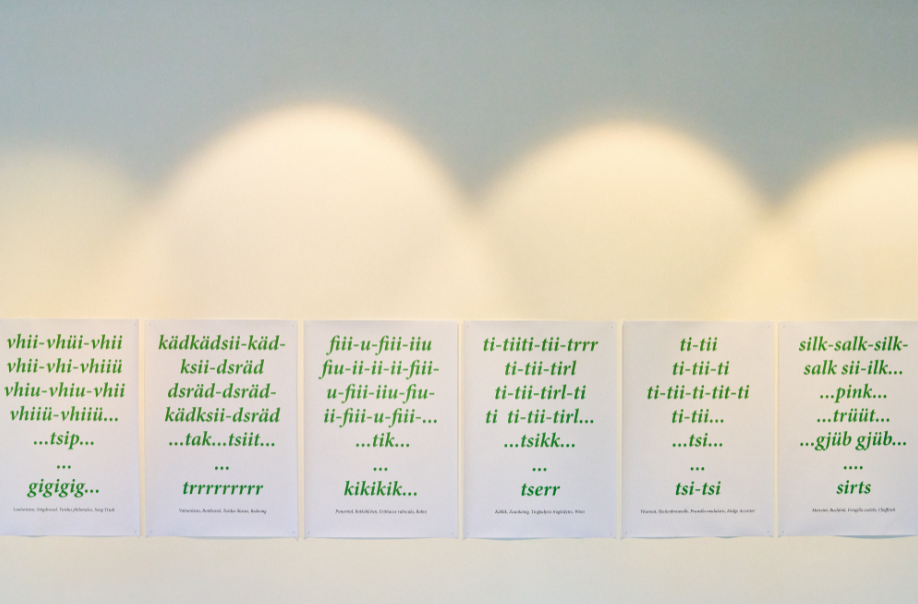
Raul Meel, Conceptualists, 2011-2016

Raul Meel, Conceptualists, 2011-2016
Raul Meel was the guest of honour of the second edition of ‘’Papermade. Internatinal Paper Artworks Biennal’’(link). Originally from Estonia, he studied electric engineering at the University of Tallin, which heavily influenced his vision and understanding of art. His work has been conceptual since the beginning. Meel is a painter, graphic designer, sculptor, installer and performance artist (particularly with fire), but also a visual and sound poet. He was one of the first artists to use serigraphy.
At the end of the Seventies Meel interrupted his university studies and began frequenting experimental, artistic and literary circles in which his machine-printed poems were well received. In the Seventies Meel developed a reflection on the universe, dedicating some works to the memory of Copernicus and between ’73 and ’79 he worked at the series Under the Sky. This became the most effective representation of cosmic expansion in Estonian culture.
In Meel’s work we find some parallel currents:
The fusion of these two currents has given way to many others, based on abstract images. They’re all distinguished by a repeated and regular use of a visual element.
Raul Meel’s biography is tied to themes concerning the opposition between East and West. As an artist who illegally participated in exhibitions in the West, Meel has been a hero of unofficial art. His means and methods were considered a threat to the official artistic tradition of the then Soviet Union. He was precluded a part in the Association of Estonian Artists, his works couldn’t sell, he was barred from leaving the country.
So he became an independent artist and an apiculturist.
Today Meel is one of the most important representatives of Estonian conceptual art and of concrete poetry. After Papermade he donated to the City of Schio a series of prints and an extraordinary collection of artist’s books. In 2017 the Civic Museum Palazzo Fogazzaro inaugurated a room dedicated to him, in which his work is displayed on rotation.
To visit his website: https://raulmeel.com





THE ARTIST’S NEXT EXHIBITIONS
ÜLEMLAUL / SONG OF SONGS
9.03.2024 / 19.05.2024
Kunstihoone Lasnamäe paviljon, Tallinn
Dal 9 marzo al 19 maggio 2024 sarà aperta al pubblico ‘’Ülemlaul’’ (‘’Song of songs’’), a cura di Tamara Luuk, che vede la collaborazione dell’artista Raul Meel con Krzysztof Piętka, presso la Kunstihoone Lasnamäe paviljon di Tallinn (Estonia).
L’esposizione intreccia immagini, suoni e parole a formare un insieme terrificante e sublime allo stesso tempo, di coesistenza tra bene e male e tra bellezza e orrore.
Immortalando la visione dei due artisti nei confronti della vita stessa, le differenze d’età e di approccio artistico coabitano negli spazi della galleria, stimolandosi vicendevolmente.
Saatesõna näitusele “Ülemlaul”
Aastal 1941 sündinud ja alates seitsmekümnendatest rohkeid rahvusvahelisi tunnustusi pälvinud Raul Meel teadvustas end kunstnikuna 1960. lõpust ning on sestpeale tegutsenud nii pildi kui ka sõna, nii etendus- kui ka ruumikunstnikuna. Tema kujundite kasvatamise ja töömeetodeis on leitud vastavusi heliloomega. Kunstihoone näitusel on Meel esindatud kahe konkreetse luuletuse pildireaga: sõnapiltide valikuga „Saalomoni laulude laulust“ ja teosest „Они наши“ („Nemad meie“, ka „Palved“). Neis esitab ta visuaalsed nägemusvasted vana testamendi Saalomoni lauludele ja nopib välja Aleksandr Solženitsõni „Gulagi arhipelaagis“ esitatud sunnitöölaagrite nimed, pannes need vaikivate tunnistajatena inimeseks olemise vastuolulisust vaagima. Mõlemad pildisarjad (vastavalt 2008–2010 ja 1987–2018) on ilmunud mitmes versioonis, sh ka köidetuna.
„Arvan, et mu palveraamatu tekstide-piltide sirvija, vaataja ja lugeja võib nende mõjul uuesti teravalt tajuda hiiglasliku Gulagi meeletut ja arutut kuritegu, selle piiritu patu ikka veel hirmutavat, aegumatut süüdivust. Seal kannatanute ülekohtu ja piinade lunastamise ülesanne jääb tänase päeva empaatilistele inimestele. Mitte ainult Gulagis ei tehtud kurja. Kõik häda ja kannatus ja lunastus on meie, meie, meie …“ kirjutab Meel oma Gulagi-üllitist saatvas tekstis. Näitusele „Ülemlaul“ aga annab tänaseks vana ja tark mees, kunstnik Raul Meel kaasa apostel Pauluse sõnad: „Ent nüüd jääb usk, lootus, armastus, need kolm; aga suurim neist on armastus!“ (1. Korintlastele 13:13).
Aastal 1990 Oświęcimis sündinud, Katowice kunstiakadeemias maalikunsti erialal lõpetanud Krzysztof Piętka obsessiivne jäägitus holokausti teemaga tegelemisel on võrreldav Raul Meele peatumatu loomevõimega. „Minu reaalsustaju mõjutab oluliselt see konkreetne piirkond, kus ma elasin lapsepõlves ja elan praegugi. /…/ Kord läksime Brzezinka väljale, mis algab umbes 200 meetri kaugusel Birkenau „surmaväravast“ ning kõigest umbes 15 meetri kaugusel SS-vaatlustornist ja laagri vangikongi ümbritsevast okastraadist. See oli esimene kord, kui nägin Birkenau laagrit lähedalt,“ meenutab ta. Väikese poisi jaoks sarnanesid endise laagri hooned lossikompleksiga. /…/ Ma ei saanud aru, mis kohas ma elan. Alles 2010. aastal, kui olin 20-aastane, hakkasin endise Birkenau ala regulaarselt külastama. Uurisin endise laagri ala liitlasvägede 1944. aasta lennukifotodelt. Neil piltidel oli näha terve hävitustaristu ning samuti mu kodu. See oli minu jaoks tohutu šokk.“
Krzysztofi maalid, mida iseloomustavad lakoonilised, enamasti selgepiirilised vormid ja erksad värvid, võivad tunduda petlikult lihtsad. Siiski ei ole ükski toon jäetud segamata ning värvi intensiivsus voolab pidevalt nagu pulbitsev allikas, ujutades üle lilled, mida näitusel on rohkesti. Mõnikord toob see dünaamiline ülevool esile sarnasused elava liha ja luudega. Krzysztofi hämmastav produktiivsus lisab tema kunstiteekonnale veel ühe kihi. „Maalimine on minu jaoks omamoodi teraapia. See on terve mu elu, olen 13 aasta jooksul maalinud üle 800 maali,“ kirjutab ta oma portfoolios.
Hea ja kurja, kauni ja koleda, õudust ja ülevust tekitava koos ja sageli läbipõimunult kulgevale eksistentsile, mida mõlemad kunstnikud – Raul Meel ja Krzysztof Piętka – nende omavahelise vanuse, tunnustatuse ja kunsti tegemise viisi erinevustest hoolimata käsitlevad, ehitubki näituse „Ülemlaul“ sisuline telg.
Tamara Luuk, näituse kuraator
Introduction to the exhibition
Born in 1941 and garnering numerous international awards since the 1970s, Raul Meel discovered his identity as an artist in the late 1960s. Since then, he has been actively involved in creating both images and texts, and worked as both a performance and installation artist. His methods and image development have been likened to the composition of music. In the exhibition at Tallinn Art Hall, Meel will showcase two picture series inspired by specific texts: The Song of Solomon and Они наши (They Are Ours, also known as Prayers). In the first series he presents visual interpretations of the Old Testament’s Song of Solomon, while in the second, he selects names of forced labour camps mentioned in Alexander Solzhenitsyn’s Gulag Archipelago, transforming them into silent witnesses that prompt reflection on the contradictions of the human condition. Both series, spanning 2008-2010 and 1987-2018 respectively, have appeared in multiple versions, including bound formats.
“I believe that as the viewer and reader peruse the texts and images within my prayer book, they can, under their influence, keenly grasp the insane and senseless enormity of the Gulag once again – the still haunting, timeless culpability of this boundless sin. The responsibility to redeem the injustice and torment endured by those who suffered there falls upon the compassionate individuals of today. Evil deeds were not confined to the Gulag. All tribulations, suffering and redemption are intertwined with us, us, us…”, Raul Meel writes in the text accompanying his Gulag-themed work. Now an elderly and wise artist, he sums up the current exhibition with the words of Paul the Apostle: “So now faith, hope, and love abide, these three; but the greatest of these is love!” (1 Corinthians 13:13).
Krzysztof Piętka, born in Oświęcim in 1990 and a graduate of the Art Academy in Katowice with a degree in painting, mirrors Raul Meel’s relentless creativity through his obsessive exploration of the Holocaust. “I was greatly influenced in my perception of reality by the specific area where I lived as a child and continue to live today. /…/ Once we went to the field in Brzezinka, which is located about 200 meters from the Death Gate in Birkenau, and only about 15 meters from an SS watchtower and the barbed wire of the camp. That was the first time I saw the Birkenau camp up close,” he recounts. To a little boy, the buildings of the former camp resembled a castle. /…/ I didn’t understand the place I was living in. It wasn’t until I turned 20 in 2010 that I began regularly visiting the area of the former Birkenau. I explored the former camp area based on Allied photographs taken from an airplane in 1944. These images revealed the entire infrastructure of extermination, including my home. It was a tremendous shock for me.”
Krzysztof’s paintings, characterised by their laconic, mostly well-defined forms and vibrant colours, may appear deceptively simple. However, every single hue undergoes blending, and the paint’s intensity seems to flow ceaslessly, like a lively spring, inundating the numerous flowers in this exhibition. At times, this dynamic overflow evokes the likeness living flesh and bones. Krzysztof’s staggering productivity adds another layer to his artistic journey. “Painting is a kind of therapy for me. It is my entire life, I have painted more than 800 paintings over 13 years,” Krzysztof writes in his portfolio.
The essence of the Song of Songs exhibition lies in the shared exploration by Raul Meel and Krzysztof Piętka, despite their differences in age, recognition, and artistic approach, into the coexistence and interweaving of good and evil, beauty and ugliness, horror and sublimity.
Tamara Luuk, curator of the exhibition
https://www.kunstihoone.ee/en/programme/raul-meel-and-krzysztof-pietka-song-of-songs/




